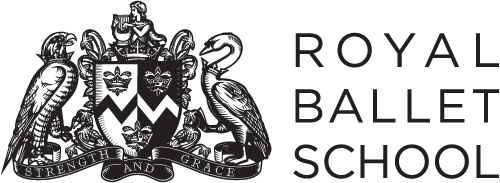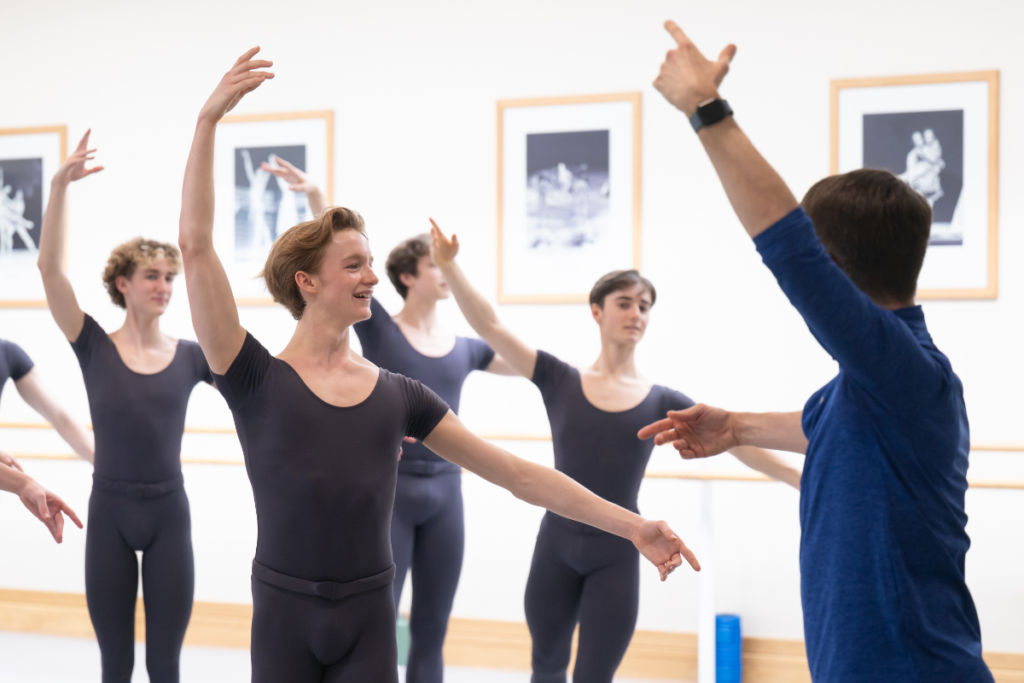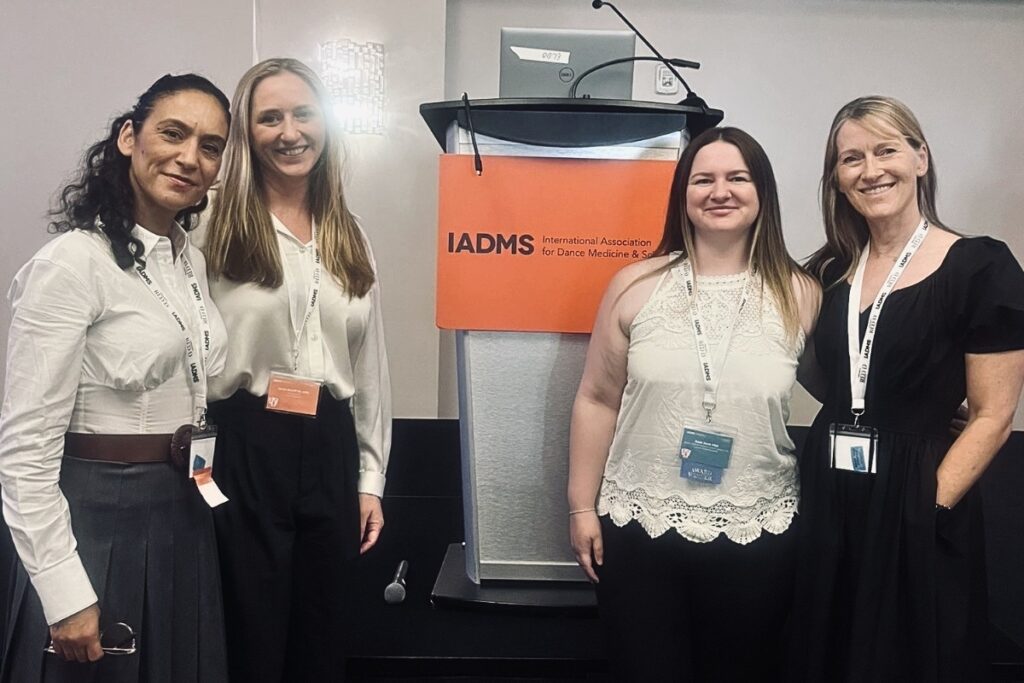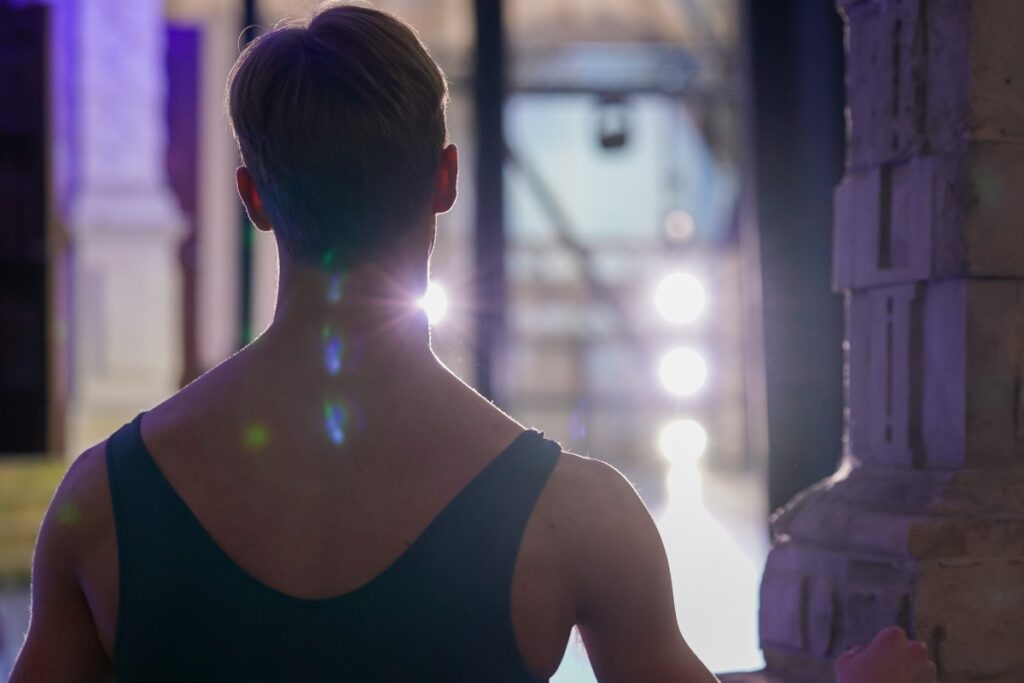The evolution of ballet training: considering what’s beyond early specialisation
In this piece, Karen Berry, Head of Teacher Training at The Royal Ballet School, explores some of the thinking that has shaped our recent decision to change the entry point for full-time training. It considers a range of perspectives on early specialisation and reflects on how these ideas relate to our own context.
This is not a formal piece of academic research, but rather a thought-piece that draws together insights from across dance, education, sport, and safeguarding. It is intended to share the broader reasoning and reflective process behind this important evolution in our training model.
Introduction
Over many decades, the foundational model of elite ballet training has remained, in many ways, unchanged, influenced by the long-held belief that early and exclusive specialisation is needed to achieve success at an elite level. Coupled with the perceived need for high volumes of deliberate practice, this belief has continued to shape training pathways for many young dancers worldwide. Yet, across many sectors, particularly elite sport, there is a growing awareness of the potential impact of early specialisation on a learner’s long-term development, well-being, and career sustainability. These insights are particularly relevant to ballet training, where, in many cases, high physical and psychological demands may be placed on children from an early age. As our understanding of child development, pedagogy, and performance longevity evolves, there is an opportunity for our sector to re-examine traditional approaches to the training of ballet and consider whether they best serve young dancers in their training contexts.
Early specialisation model
Early specialisation (ES), as a subject of research and academic literature in the context of ballet training, is in very early stages of development, compared to the established findings in sport science and elite sport training. Ballet is not a sport but an art form, rich with expressive and cultural depth, but we cannot deny the athletic rigour inherent in its training. The precision, physical conditioning, and performance pressure faced by aspiring dancers parallel the demands found in elite sport. In ballet, specialisation can be characterised by an intensive, year-round commitment to classical training, often to the exclusion of other physical activities or dance genres.
Undeniably, some children have flourished within this environment, and many will continue to do so. The model can offer potential advantages: consistent access to expert tuition, onsite scheduling that combines and balances academic work with ballet training, the cultivation of a strong work ethic, and the opportunity to train alongside peers with similar goals. However, these benefits must also be weighed against the emerging potential risks associated with ES.
Longevity of success: diversification
While more longitudinal, dance-specific research is needed, there is growing evidence to support a training model that emphasises early diversification rather than ES1, 5, 8, 14, 18. Diversification in physical, cognitive, and affective development may cultivate not only healthier dancers but more versatile and adaptable dancers. Athletes who delay specialisation often enjoy longer, more sustainable careers than those who specialise early. The most enduring elite performers are not always those who specialised early but often those who sampled broadly 5, 12.
By encouraging young dancers to experience and partake in a number of different activities, sports and dance genres, physical literacy can be enhanced, preparing students for long-term success. David Epstein shares his innovative exploration into education, sport and skill learning and questions and reviews how we train for success in his profound book Range: Why Generalists Triumph in a Specialized World (2019). He makes a compelling case for more generalisation in learning and, although he uses an expansive range of studies from sport and the wider world, the findings can be considered as significant and relevant to dance as they are for any other activity. In Epstein’s model, diversity, not intensity, is the cornerstone of long-term success.
Bodies, minds and souls do not mature on the same timeline. Later specialisation may not only help mitigate known risks to physical and mental well-being, but can allow time for emotional intelligence, tenacity, versatility and artistic nuance to develop. In an era where choreographers increasingly value individuality and interdisciplinary fluency, these attributes are more relevant than ever. Early diversification can offer a powerful pathway for nurturing versatility, enabling the body and mind to be readily receptive to movement challenges that lie ahead. If we treat versatility as a skill that grows exponentially, it follows that students exposed from the outset to a broad range of movement and mind experiences will be more finely attuned to absorb new skills.
Consider Wayne McGregor, whose exposure to diverse life experiences and passion for science and other art forms have fuelled his inventiveness in dance, resulting in him being arguably one of the most prolific and diverse choreographers of his time. High-profile dancers such as Misty Copeland, Carlos Acosta, and Adam Cooper have spoken publicly about training diversely and specialising later.
Two Upper School alumni and late specialisers, Steven McRae (Principal at The Royal Ballet) and Kristen McNally (Principal Character Artist at The Royal Ballet and choreographer) openly acknowledge how their childhood training and experiences helped shape their career.
I wouldn’t be the same dancer today if I hadn’t had a diverse training. I didn’t really focus on ballet until around 14-15 years of age and even then, I didn’t stop learning other subjects. If I had only experienced ballet when I was younger, I would have felt restricted and would have left. – McRae, 2019, cited in Berry 2021
Growing up attending the local comprehensive helped me shape a strong identity beyond ballet. It gave me the freedom to strive academically outside the dance world, nurturing a curiosity for science, maths, and art. I was on the school netball, swimming and athletics teams, took part in drama productions leading me on to the National Youth Theatre, and was surrounded by peers with a wide range of passions and interests. These experiences gave me a broad outlook, allowing dance to be a significant part of my life, but never defining it. This foundation continues to shape how I see things today and has certainly added to the diversity and versatility within my career. – McNally, 2025, personal interview
At Year 7, Kristen was training once a week with her local dance teacher in ballet, tap, and modern and progressed to The Royal Ballet School’s Senior Associates at age 14.
These success stories challenge a false binary between early commitment and professional viability, revealing there is more than one path to becoming an elite dancer. Dancers who diversify early and specialise later can bring a rich artistic expression and deep emotional range to their craft. Rather than diluting excellence, a more diverse training can enhance and develop a dancer’s skill set beyond what can be achieved by specialisation on its own.
Early specialisation: potential drawbacks
Evaluating ES through the lens of health and performance research is vital in creating environments that nurture both student well-being and sustainable career success.
In sport, early specialisation has been shown to be associated with higher injury rates and psychological stress2,3,13,16. Current literature in sports specialisation presents a uniform opinion: athletes who specialise in early adolescence are at greater risk of LEI (lower extremity injury) (Puttzitellio et al., 2021). A recent publication in the International Journal of Sports Physical Therapy (Callahan, E. and Mangum, L.C. 2025) reports that 72% of dance injuries were due to overuse and over-training, with higher injury rates among those who began dancing before age 12 and who focused exclusively on dance, especially ballet. Of particular relevance to female ballet dancers, is the concern that ES in sport has been identified as a contributor to the medical condition once known as female athlete triad, now framed within the broader concept of Relative Energy Deficiency in Sport –RED-S4. Equally concerning are the psychological challenges and trauma related disorders that have been associated with ES – burnout, perfectionist tendencies, depression, anxiety, disordered eating, and emotional exhaustion2, 4, 5, 9, 15, 18. These challenges are not always immediately apparent, yet their long-term consequences can be profound.
Of notable concern is premature identity foreclosure, a psychological process where individuals commit to a singular identity, often without exploring broader aspects of self. ES can unintentionally catalyse this process7. From a young age, if children receive consistent social reinforcement around their role as a dancer, they may develop a fixed identity before it has developed organically. Well-intentioned comments and praise for a child’s discipline and talent such as ‘he’s destined to perform’, ‘she’s a future ballerina’ can unintentionally cement a singular identity. Such affirmations, although affectionate, can plant the belief that worth and identity are solely and inextricably tied to dance achievement, making it increasingly difficult for a child to imagine a self beyond the studio. Ballet isn’t simply what they do but who they have become.
When a young dancer’s entire sense of self is primarily defined by being ‘the ballet kid,’ there may be little room left for exploring other interests, values and social interactions. A narrow self-concept may leave dancers more emotionally vulnerable to setbacks, anxiety, and difficulty transitioning into new identities. Burnout doesn’t always look like quitting. It can manifest as emotional detachment, diminished joy, chronic anxiety, and disordered coping that can persist long after training and careers have ended. Encouraging early diversification with varied activities, environments, and peer groups can foster richer developmental experiences and help prevent a one-dimensional identity (Coakley, 2000, as cited in Hill, 2009). This broader exposure strengthens emotional resilience and adaptive life skills and could lay a more sustainable foundation for long-term fulfilment in ballet.
Renowned pianist Lang Lang has spoken openly about the pressure of his early piano training, stating that had his career not culminated in success, the psychological toll could have been lasting and profound. He has acknowledged that the training environment and programme he followed carried the potential for emotional harm, particularly given the weight of living up to an identity that he felt had been prescribed for him from a young age.
The opportunity for change
It could be argued that, for many years, the logic underpinning ES in ballet has been grounded in tradition, relating back to when dancers needed to peak young. Professional careers started early and were historically short, often ending in the mid-to-late twenties or early thirties due to physical wear, injury, burnout and limited compatibility with family or broader life priorities. The early, exclusive commitment to ballet training appeared necessary to maximise a narrow window of opportunity.
However, with advancements in sport science, rehabilitation, conditioning techniques and nutrition, many professional dancers now sustain long and fulfilling careers. Additionally, although further reform may be required, legislation of dancers’ working conditions has enabled a more safe, equitable, and flexible culture, which has resulted in dancers performing well into their late thirties and forties. In this new landscape of longevity and flexibility, the logic that would support ES above other pathways can be questioned.
Rethinking the pipeline
How then do we begin to apply some of these insights? What might we do, as individuals or organisations in this sector, to evaluate our current practice and ensure that the training of today’s elite dancers continues to serve not only the rigour of the art form, but also students’ needs, well-being, sustainability, and individuality?
At The Royal Ballet School, the process of reform has already begun, grounded in a strategic review and a critical evaluation of our current training model. The initial phase examined how ES shaped learning content, pedagogical processes, and definitions of success at the School. Building on the evolution of our training programme to date, these insights will inform our future pathway. The process of reform then rests on four core and interdependent focus areas that will guide meaningful and lasting change:
1. Curricular reform – Today’s children enter training with different needs and vulnerabilities than those of previous generations. Frameworks will be adapted to reflect the child of today’s developmental needs, determining when and how specialisation should occur: ensuring compatibility with students’ age, maturity, and capabilities.
Training content must be fit for purpose. Frameworks and systems of training will evolve to meet the increasingly diverse skill set required of today’s dancers. This includes versatility across both classical and contemporary ballet forms, each demanding distinct technical and creative competencies. A forthcoming review will assess the training framework across multiple entry points to ensure alignment with industry demands and support varied progression pathways. Access routes into vocational training will also be evaluated, with guidance provided to teachers and parents, and updates shared through our outreach programmes. Ongoing and new research will play a vital role in shaping the evolved training model, informing both current practice and future development.
2. Educator development – Guidelines relating to pre-vocational training will be shared with private dance teachers – dedicated educators who play a vital role in the ecosystem that nurtures a young dancer’s journey. Often the first to ignite passion in their students, these teachers may not have had access to broader education in areas such as child development, pedagogy, psychology, and injury prevention. By offering access to current thinking and practices, we aim to strengthen collaborative pathways and empower teachers to holistically support their students: not just towards vocational goals, but lifelong artistic and personal growth.
3. Parent engagement – Often, pressure for early success originates outside the studio. Parents naturally see their role as helping their children to succeed, so we should help them to understand that the pathway to success, and what it looks like, can vary from child to child. Parents often find themselves navigating a maze of conflicting advice and it’s understandable that they see specialising early as giving a head start, and intensive practice as a marker of commitment or potential. In recent years, the widespread, but often uncritical adoption of Malcolm Gladwell’s ‘10,000-hour rule’ in popular discourse, has fuelled the belief that more is better and therefore may justify an early start to training10. However, this narrative rarely accounts for the nuanced developmental needs of young dancers, or the long-term sustainability of such demands. Sharing of information, guidance and resources will be essential to enable parents to understand different models and pathways to success.
4. Talent definition and identification – A wider lens can only be a good thing. To foster a truly inclusive and forward-thinking talent identification, programmes and audition processes can expand criteria to embrace a broader, more nuanced understanding of talent potential. Recognising that high-level ability may not always be immediately evident encourages a shift away from placing too much emphasis on honed technical training at a young age and seeing talent not just in what is already refined, but in possibility. By cultivating the insight to appreciate evolving strengths and emerging artistry, we open the door to discovering talent in diverse forms.
Refining excellence for the next generation
Reform in ballet training and education need not come at the expense of excellence or humanity. As an industry we have been slow to accept findings from sports science, education and psychology: at times tradition has been the enemy of change, however we can no longer ignore what is clear. Ballet will always demand rigour, but that rigour must be tempered with responsibility, and as educators and leaders we must be bold and embrace that responsibility. Ballet requires specialised training, that’s unequivocally accepted, however it’s when and how that training is integrated that requires review.
Our dancers require a training and education that not only prepares them for a future and versatile career but for a life beyond the studio and stage. Only when knowledge informs practice can we responsibly shape the dancers of tomorrow. We must be willing to examine our own assumptions and evolve, and, if needed, let go of methods and processes that are rooted solely in tradition. Reform does not mean diluting the art form: it means building a healthier, more inclusive foundation on which it can grow. In doing so, we will not only elevate the quality of artistry on stage, but also the well-being of those who bring it to life. We don’t compromise excellence; we expand the stage and invite potential to flourish.
Keywords
- Deliberate practice: The term was originally defined by psychologist K. Anders Ericsson (1993) and is characterised by goal-oriented and structured training designed specifically to improve performance.
- Diversification: in sport, diversification is generally accepted as exposure to a variety of sports and activities. Early diversification, defined in most literature as participating before the age of 12, though some sources extend this to early adolescence.
- Specialisation: in sport, specialisation is generally accepted as intensive training in a single sport, for more than 8 months in a year. In dance, it’s harder to define due to the multifaceted nature of dance training. In defining dance specialisation, consideration must be given to:
- 1: participating in one or more dance genres at the exclusion of other activities.
- 2: participating in a specific dance genre at the expense of, or minimal exposure to, other dance genres.
- Early specialisation: in sport, early specialisation is defined in most literature as participating before the age of 12, though some sources extend this to early adolescence.
- Identity foreclosure: a psychological concept that refers to an individual’s commitment to an identity without exploring or considering other options.
- Physical literacy: generally, the development of fundamental movement skills and fundamental sport skills that allow a participant to move confidently, competently and with control in a wide range of physical activities: sport and dance. The ABCs of physical literacy are particularly relevant to the training of young dancers: Agility, Balance, Coordination and Speed
- RED-S: Relative Energy Deficiency is a condition that affects males as well as females and occurs when the body doesn’t have enough energy availability, causing all the body systems to be affected.
- Self-concept: a psychological concept that refers to an individual’s perception of themselves that encompasses their abilities, traits and roles that define their identity.
References
- Balyi, I., Way, R. and Higgs, C. (2013) Long-Term Athlete Development. Champaign, IL: Human Kinetics.
- Beninteso, C. (2024) Performance vs. appearance: Psychological consequences of early specialization in aesthetic sports. Frontiers in Psychology 15.
- Berry, K. (2021) Training for Versatility and Creative Thinking. In: Jackson, J. Ballet: The Essential Guide to Technique and Creative Practice. Marlborough: The Crowood Press.
- Blagrove, R.C., Bruinvels, G. & Read, P. (2017). Early sport specialization and intensive training in adolescent female athletes: Risks and recommendations. Strength and Conditioning Journal 39(5).
- Brenner, J.S., LaBotz, M., Sugimoto, D., Stracciolini, A., et al. (2016*). Sports Specialization and Intensive Training in Young Athletes. Pediatrics 138(3). *Updated report 2021
- Callahan, E. and Mangum, L.C. (2025) Exploring Trends Between Dance Experience, Athletic Participation, and Injury History. International Journal of Sports Physical Therapy, 20(3).
- Choudhury, M.M., Erdman, A.L, Stapleton, E., Gale, E. and Ulman, S. (2024) Identifying Links Between Athletic Identity and Risk Factors Related to Youth Sport Participation. Frontiers in Psychology 15.
- Côté J, Lidor R, Hackfort D. (2009) ISSP Position Stand: To Sample or to Specialize? Seven Postulates About Youth Sport Activities That Lead To Continued Participation and Elite Performance. International Journal of Sport and Exercise Psychology 7(1).
- Daley, M.M., Shoop, J. & Christino, M.A. (2023) Mental Health in the Specialized Athlete. Musculoskeletal Medicine, 16(9).
- Gladwell, M. (2008) Outliers: The story of success. London: Penguin Books.
- Guettler, J.H. and Chrumka, A. (2024) The Fallacy of Falling Behind: The Realities of Early Sports Specialization. (AOSSM) American Orthopaedic Society for Sports Medicine 11.
- Güllich, A., Macnamara, B. N., & Hambrick, D. Z. (2021). What Makes a Champion? Early Multidisciplinary Practice, Not Early Specialization, Predicts World-Class Performance. Perspectives on Psychological Science 16(6).
- Hill, J. (2009) Sport Specialization and Identity: A Sociological Perspective. In: I. Balyi, R. Way and C. Higgs, eds. Long-Term Athlete Development. Champaign, IL: Human Kinetics.
- Jayanthi, N., Pinkham, C., Dugas, L., Patrick, B., and Labella, C. (2013). Sports specialization in young athletes: evidence-based recommendations. Sports Health, 5(3).
- Jayanthi, N., Post, E.G., Laury, T.C. and Fabricant, P.D. (2019) Health Consequences of Youth Sport Specialization. Journal of Athletic Training 54(10).
- McLellan, M., Allahabadi, S. and Pandya, N.K. (2022) Youth Sports Specialization and Its Effect On Professional, Elite, And Olympic Athlete Performance, Career Longevity, and Injury Rates: A Systematic Review. Orthopaedic Journal of Sports Medicine 10(11).
- McNally, K (2025) Interview with author. London, UK.
- Myer, G.D., Jayanthi, N., DiFiori, J.P., Faigenbaum, A.D., Kiefer, A.W., Logerstedt, D. and Micheli, L.J. (2015) Sport Specialization, Part I: Does Early Sports Specialization Increase Negative Outcomes And Reduce The Opportunity For Success in Young Athletes? Sports Health, 7(5).
- Puzzitiello, R.N., Rizzo, C.F., Garvey, K.D., Matzkin, E.G. and Salzler, M.J. (2021). Early sports specialisation and the incidence of lower extremity injuries in youth athletes: current concepts. Journal of ISAKOS, 6(5).






